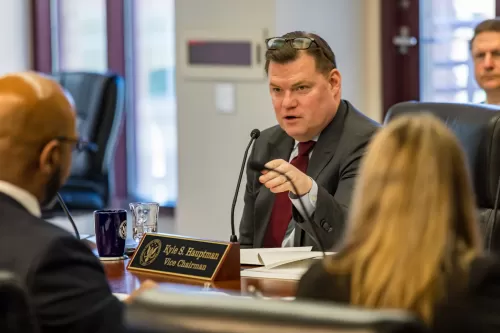NCUA Vice Chairman Kyle S. Hauptman delivers remarks during the October 2022 NCUA Board Meeting at the NCUA’s headquarters in Alexandria, Virginia.
As Prepared for Delivery on October 20, 2022
Thank you, Anthony for this update. Thank you, Chairman Harper and Board Member Hood, for elevating awareness of the Central Liquidity Facility (CLF) by requesting this annual update. The CLF is the only practical source of emergency liquidity for the over 3,600 credit unions under $250 million in assets. That’s 3,600 credit unions out of a total of nearly 4,900 credit unions in the United States.
It’s been 40 years since we’ve seen inflation at the levels they are today. Interest rate risk and liquidity are a growing challenge. Although the credit union movement has a variety of tools to manage these challenges including the derivative rule and updated supervisory guidance on interest rate risk, credit unions under $250 million are especially vulnerable.
They are limited in their ability to manage their interest rate risk using derivatives – even in their simplest form as allowed by the NCUA. More to the point, these credit unions are so limited in resources that a direct relationship with the CLF is impractical.
The CARES Act solved that problem by authorizing a corporate credit union to join the CLF on behalf of a subset of its members. However, that authorization is set to expire on December 31, 2022.
Small credit unions — specifically the 3,600 under $250 million in assets — face the real prospect of losing the CLF as their emergency liquidity source.
In addition, we expect an immediate reduction of $9.7 billion in reserve liquidity for the credit union system as the corporates withdraw their funds. That’s a $9.7 billion buffer between credit unions and the American taxpayer. The current interest rate risk environment makes a liquidity event a real possibility. Without agent sponsorship, my fellow board members and I are deeply concerned about the consequences for the credit union movement.
Thank you, Mr. Chairman. This concludes my remarks. I have one question.
Anthony, what has to happen to prevent 3,600 credit unions from losing access to emergency liquidity funding on December 31, 2022?



